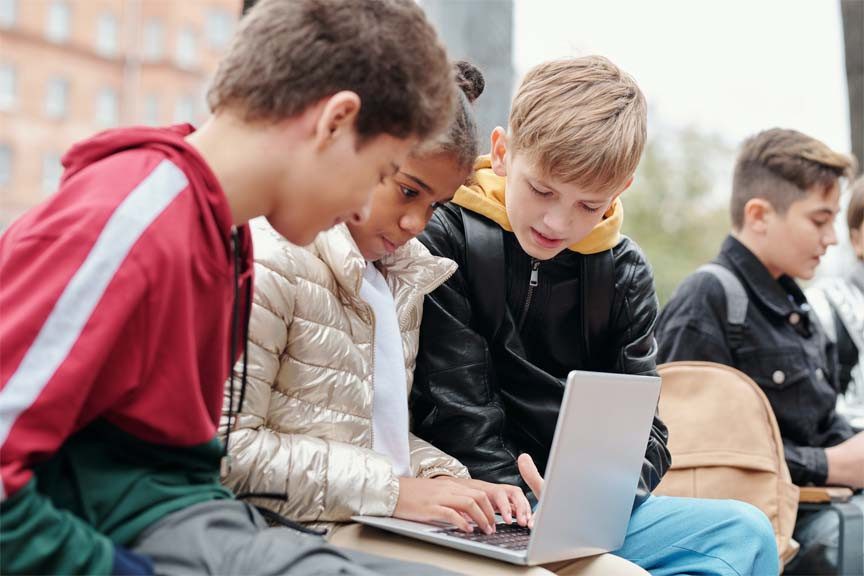With teachers feeling overstretched and overworked, peer editing became a vital tool used in the development of EFL students in Bogotá, Colombia. But just what did these students learn from this teaching strategy? And can we learn from it too?
So much more goes into editing another’s work than simply a knowledge of grammar rules and language conventions. An editor must be professional, tactful, and articulate in order to be considered successful. For a class of ninth-grade English students in Colombia, developing good editing skills became not only a requirement but also an invaluable tool for building collaboration skills.
THE RESEARCH
In her article “Peer Editing: A Strategic Source in EFL Students’ Writing Process,” Nubia Mercedes Diaz Galvis explores the value of peer editing in English acquisition settings. In her own words, teachers in the Bogotá school district were extremely “overstretched,” leaving students without a way to “receive much needed feedback without overtaxing the teacher’s resources” (Diaz 2010, 85). Peer editing was implemented as a solution to this problem, but Diaz sought to understand how this teaching strategy affected the students’ learning, along with their ability to build relationships. Throughout her case study, Diaz assumed that peer editing optimized classroom time for teachers while also allowing the students to learn “both from the revisions they receive[d] and from the process of revising others’ work” (86).
Diaz found her motivation in Lev Vygotsky’s theory of learning and development, specifically the Zone of Proximal Development (ZPD). The ZPD is defined as “the space between what a learner can do without assistance and what a learner can do with adult guidance” (Billings 2017, para. 2). In the case of this Bogotá school research project, Diaz surmised that each student could assume the role of “adult guide” through their peer editing assignments. This could allow for the students to feel empowered in terms of knowledge and collaboration, and to develop genuine friendships and trust with each other. In turn, their ZPDs could expand to match their improved performance levels.
Diaz asked a select group of ninth–graders from various zones in the Bogotá school district to participate in this case study. In order to gather her data, she relied on interaction observation, field notes, video recordings, and student artifacts, which included surveys, worksheets, and writing drafts. With each peer editing team, she paired up students based on their level of English proficiency, with one student being considered a novice and the other being considered an expert. After coding the data she gathered, Diaz found that peer editing facilitated the novice students’ transition from “assisted to independent performance” and that as the students progressed over time, they all felt motivated in “helping others and achieving tasks together” (Diaz 92). Each student was thus able to effectively and efficiently advance through their ZPDs. Her data also revealed that the relationships formed resulted in the students feeling a sense of empowerment in terms of their own knowledge and power, specifically the power they have to create change in their knowledge (93). “As pointed out by Vygotsky’s principles,” Diaz explains, “learning always happens in a community” (2010, 86).
“As pointed out by Vygotsky’s principles, learning always happens in a community.”
—Nubia Mercedes Diaz Galvis (2010)
THE IMPLICATIONS
The collaborative skills that the students gained through peer editing seem to be the most valuable observed outcomes of this study. These outcomes serve as a reminder that an editor needs to be more than an authoritarian figure. In order for an editor to be successful, they need to be approachable. The rapport and trust that the students built among themselves became fundamental to their growth as editors, writers, and English speakers. Editors should strive to build similar levels of trust and understanding with their clients and peers, and teachers should draw from Diaz’s pedagogical toolbox: peer editing is a tool that can teach authors at all levels.
To discover more about the value of peer editing, read the full article:
Diaz Galvis, Nubia Mercedes. 2010. “Peer Editing: A Strategic Source in EFL Students’ Writing Process.” Colombian Applied Linguistics Journal 12, no. 1: 85–98. Redalyc, https://www.redalyc.org/articulo.oa?id=305726658006
—Hope Jones, Editing Research
FEATURE IMAGE PROVIDED BY PEXELS
Find More Research
Take a look at Erin Johnston’s Editing Research article for more information on peer editing: “The Truth about Peer Editing.”
Read Scout McMillan’s Editing Research article to learn more about EFL/ELL students’ experiences: “What English Language Learners Can Teach Us About Editing.”





Emma
I really like the emphasis on relationships that is found within this research. It almost humanizes the role of reviewers and editors, making it more about collaboration than control. Great read!